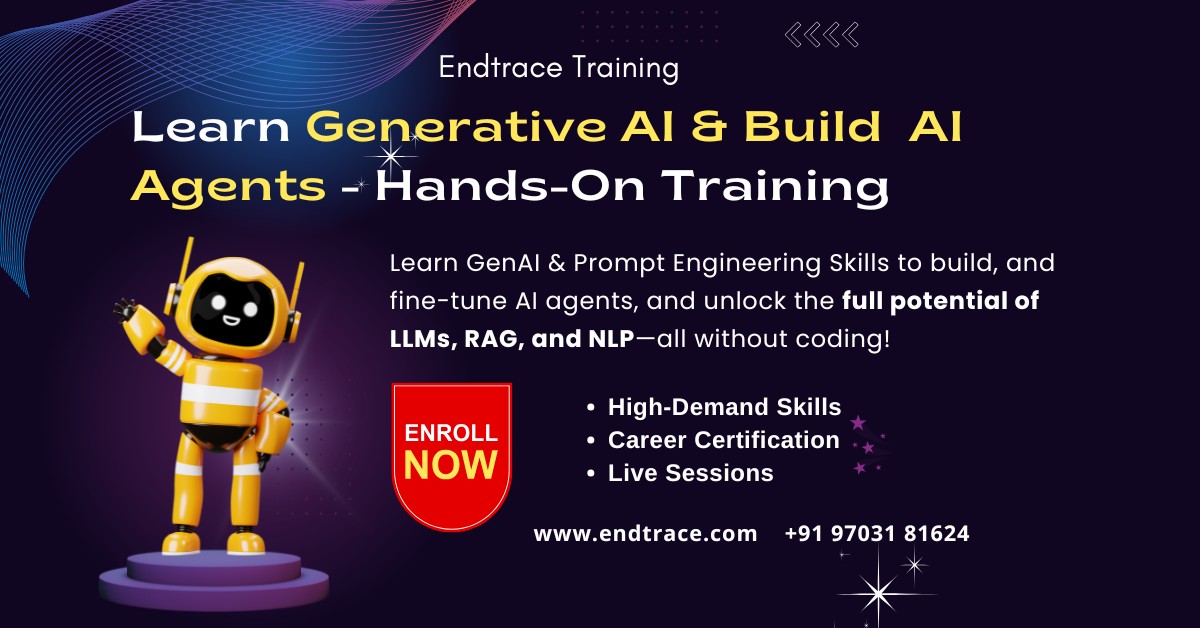Machine Learning (ML) and Deep Learning (DL) are the core technologies behind Generative AI—they allow computers to learn without being explicitly programmed.
What is Machine Learning (ML)?
Machine Learning (ML) is a branch of AI that allows computers to learn from data and make predictions or decisions without human intervention.
Instead of writing hardcoded rules, we train models using large datasets.
The more data an ML model gets, the better it becomes at making predictions.
How Does ML Work?
ML follows a simple learning process:
Data Collection – Gather relevant data (e.g., customer reviews, images, financial data).
Training the Model – Feed data into an algorithm and let it learn patterns.
Testing & Evaluation – Check how well the model predicts outcomes.
Improvement & Deployment – Optimize the model and use it in real-world applications.
Real-World Examples of ML:
Spam Filters – Gmail detecting spam emails.
Recommendation Systems – Netflix suggesting movies, Amazon recommending products.
Fraud Detection – Banks detecting suspicious transactions.
Autonomous Vehicles – AI predicting pedestrian movements.
Medical Diagnosis – AI analyzing X-rays and detecting diseases.
Types of Machine Learning – A Deep Dive Beyond Textbooks
Think of Machine Learning (ML) as a journey of intelligence where AI systems go from being a newborn baby to a self-learning expert. How does this happen?
AI learns in three different ways, just like humans:
- Supervised Learning – Learning from a teacher
- Unsupervised Learning – Discovering patterns alone
- Reinforcement Learning – Learning through trial & error
Let’s go deeper into each with real-world analogies, hidden challenges, job-use cases, and future trends.
Supervised Learning – The Student & Teacher Model
Supervised Learning is like a student learning from a teacher using a well-prepared syllabus. The AI model is trained using labeled data, meaning each input comes with the correct answer.
Example: Teaching a kid to recognize animals. You show them a picture of a cat and say, “This is a cat.” The child remembers this pattern and uses it when seeing new animals.
How AI Learns in Supervised Learning?
Imagine an AI model as a new employee in a company. The training data acts as the employee handbook, guiding it on what’s correct. After enough training, the model can predict outcomes accurately.
Real-World Examples of Supervised Learning
Email Spam Detection – AI identifies spam emails based on labeled examples.
Loan Approval in Banks – AI predicts whether a loan should be approved or not based on past customer records.
Disease Diagnosis in Healthcare – AI detects diseases from medical images (X-rays, MRIs).
Hidden Challenges & Industry Issues
- Requires large labeled datasets – Manually labeling data is expensive and time-consuming.
- Overfitting risk – If the model memorizes too much, it fails on unseen data.
- Bias in Data – If past data contains discrimination (e.g., rejecting loans for certain demographics), the AI inherits the bias.

Job-Oriented Use Case: Interview Question
Question: “How would you use supervised learning for fraud detection in financial transactions?”
Answer Approach:
- Define the problem: Detect fraudulent transactions.
- Use labeled historical data: Past transactions labeled as ‘fraud’ or ‘legit.’
- Choose an ML model: Decision Trees, Random Forest, or Neural Networks.
- Deploy and monitor: Continuously improve based on new fraud patterns.
Explore Real-World Generative AI Chat Agent Use-cases
Unsupervised Learning – “The Detective Model”
Unsupervised Learning is like an explorer without a map. The AI has no labeled data and must find patterns and relationships on its own.
Example: Imagine being in a new city and trying to group different neighborhoods without prior knowledge.
How AI Learns in Unsupervised Learning?
Instead of memorizing labeled examples, the AI finds hidden patterns in the data using clustering or association.
Real-World Examples of Unsupervised Learning
- Customer Segmentation – AI groups customers based on shopping behavior.
- Anomaly Detection – AI detects fraud in credit card transactions without prior labels.
- Market Basket Analysis – AI finds relationships between products (e.g., people who buy diapers also buy baby wipes).
Hidden Challenges & Industry Issues
Hard to evaluate results – Since there are no correct labels, it’s tough to measure accuracy.
Cluster boundaries are unclear – AI may group things incorrectly.
Difficult to explain decisions – Unsupervised models often lack interpretability.
Job-Oriented Use Case: Interview Question
Question: “How can unsupervised learning help in cybersecurity?”
Answer Approach:
Define the problem: Detect unusual network activity (hack attempts).
Use clustering techniques: Group ‘normal’ vs. ‘abnormal’ activity.
Deploy anomaly detection models: Identify unknown cyber threats.
Continuous learning: Adapt as hackers change tactics.
Find Generative AI learning sources:
Generative AI Prompt Engineering Course and Certification
Roadmap Generative AI from scratch
How Generative AI is Changing the Career for S/W Developers
How Firms Are Thinking About Generative AI in the AI era
Reinforcement Learning – “The Gamer Model”
Reinforcement Learning (RL) is like playing a video game where the AI learns by trial and error. The AI receives rewards for correct actions and penalties for mistakes.
Example: Training a dog . If the dog sits when told, you give it a treat (reward). If it doesn’t, no treat (penalty). Over time, the dog learns the best action.
How AI Learns in Reinforcement Learning?
Instead of being told what to do, the AI tries different actions and learns from feedback to maximize rewards.
Real-World Examples of Reinforcement Learning
Self-Driving Cars – AI learns to drive by trial & error, improving with every experience.
Stock Trading Bots – AI maximizes profits by making better trading decisions.
Robotics – AI-powered robots learn to walk, jump, and perform tasks.
Hidden Challenges & Industry Issues
Requires massive computational power – Training RL models can take weeks or months.
AI can exploit loopholes – In some cases, AI finds shortcuts instead of learning properly.
Hard to transfer learning – What AI learns in one environment may not work in another.
Job-Oriented Use Case: Interview Question
Question: “How would you use Reinforcement Learning in a supply chain?”
Answer Approach:
Define the problem: Optimize warehouse logistics.
Reward system: Minimize delivery time, reduce storage costs.
AI learns from real-time data: Finds the best routes & stocking strategies.
Continuous adaptation: AI adjusts to changes (e.g., supply shortages).
Final Words: Mastering ML for Your Career
Understand when to use Supervised, Unsupervised, and Reinforcement Learning.
Explore real-world applications in finance, healthcare, cybersecurity, and robotics.
Master job-use cases to impress in interviews.
Here are unique real-world Generative AI projects using LLMs. Each project includes a problem statement, project goal, and real-world impact, ensuring practical application.
Generative AI Projects for Beginners
Real-world Generative AI Projects for Students
Generative AI Real-Time Project Free Download
Related Articles
Ultimate Guide: Roadmap to Learn Agentic AI Workflows 2025
Roadmap to Learn Agentic AI in 2025: Step-by-Step Guide for Beginners Have you ever wished a computer could do more than just follow commands? What...
How Commerce & Arts Students Can Thrive as AI Transforms Their Industries
AI Isn't Just for Coders – It’s for You Too Many students from commerce and arts backgrounds believe AI is only for programmers or tech experts. It...
Prompt Engineering Principles: Execute Generative AI Effectively in 2025
Mastering Prompt Engineering: Your First Step into the World of GenAI Generative AI is changing everything — how we write, learn, create, and solve...
FREE Ultimate Google Guide to Prompt Engineering in 2025 – Download
Want Better Results from AI? Start with Smarter Prompts Curious how to get better answers from tools like ChatGPT or Gemini or Claude? It all starts...
Endtrace Offers Master AI Course Free for MCA Freshers Exclusively
Endtrace Offers Master AI Course Free for MCA Freshers – Exclusive! Are you an MCA fresher ready to shape your future with AI? At Endtrace, we’re...
Best No-Code AI Course After 12th – Become a Certified ChatGPT Expert
Imagine Standing Out in Your Friend Group with AI Superpowers You’ve just completed your 12th grade. While everyone around you is busy deciding...

